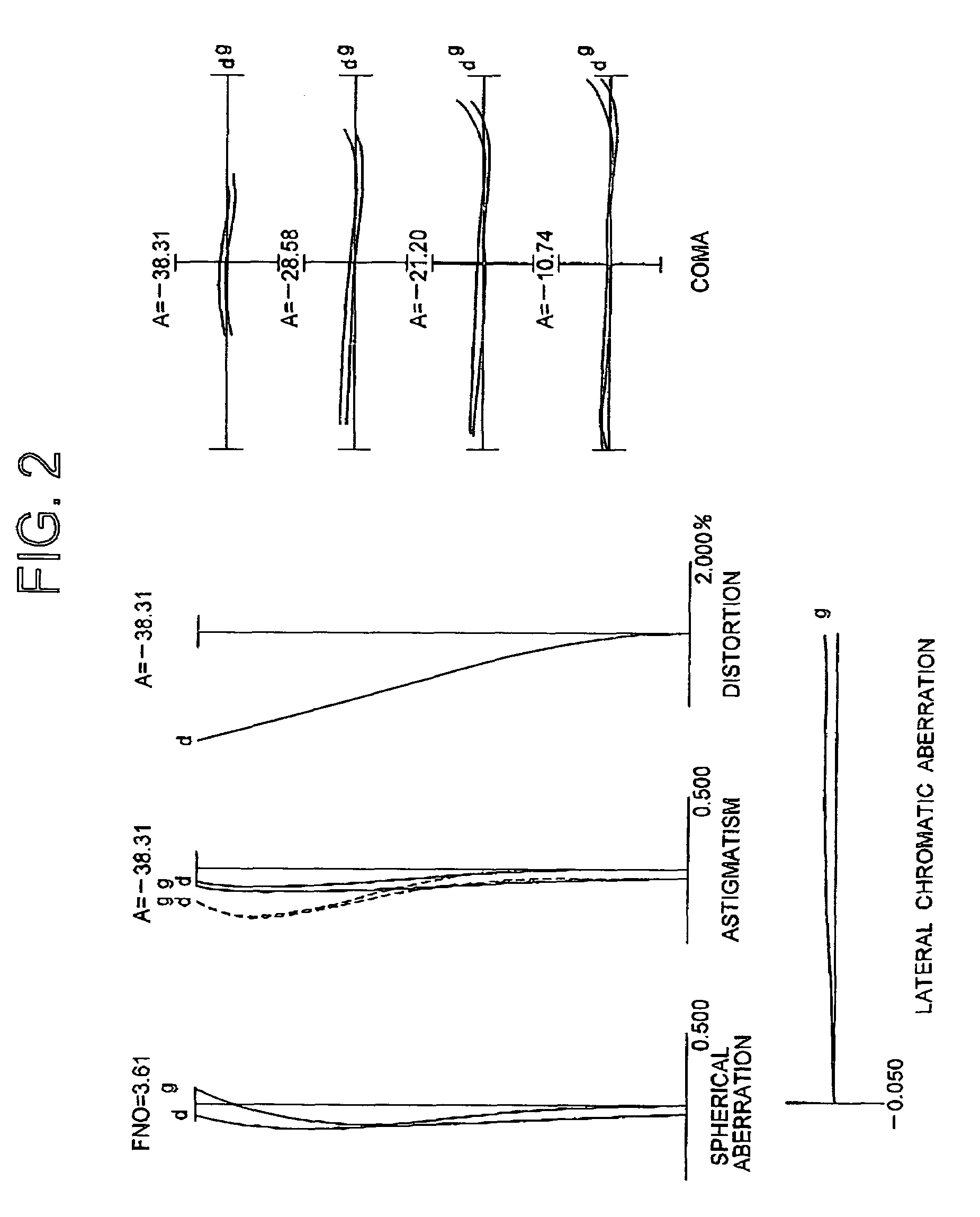Zoom lens system
a zoom lens and zoom technology, applied in the field of zoom lens systems, can solve the problems of difficult manufacturing and unsatisfactory correction of aberration, and achieve the effect of easy manufacturing and high optical performan
- Summary
- Abstract
- Description
- Claims
- Application Information
AI Technical Summary
Benefits of technology
Problems solved by technology
Method used
Image
Examples
first embodiment
[0049]Basic construction of the zoom lens according to the present invention is going to be explained below.
[0050]Generally, in a negative-positive two-group zoom lens, a second lens group having positive refractive power acts as a master lens of a whole zoom lens system. Usually by the effect of the second lens group, an air space (a necessary minimum air space for varying lens group positions) between the first lens group and the second lens group has to be secured for zooming with securing the back focal length. In consideration of reducing the size and manufacturing cost of the zoom lens system, it becomes further necessary to reduce the size and the number of lens elements of the second lens group as much as possible.
[0051]There are such lens types, satisfying these requirements, as an Ernostar type, a modified Triplet type, and a Sonnar type having a basic construction of positive-positive-negative-positive power arrangement. However, the lens having any of these lens types ha...
example 1
[0078]FIG. 1 is a diagram showing the lens arrangement of a zoom lens system according to Example 1 of the present invention together with movement of each lens group.
[0079]The zoom lens system according to Example 1 is a negative-positive two-group zoom lens system composed of, in order from an object, a first lens group G1 having negative refractive power and a second lens group G2 having positive refractive power.
[0080]The first lens group G1 is composed of, in order from the object, a negative meniscus lens L1 having a convex surface facing to the object, and a positive meniscus lens L1p having a convex surface facing to the object. The negative meniscus lens L1 is a compound lens constructed by glass and resin. Resin is arranged on the image side surface of the lens. The image side surface of the resin is an aspherical surface.
[0081]The second lens group G2 is composed of, in order from the object, a front lens group G2-1, an aperture stop S, a rear lens group G2-2, and a fixed...
example 2
[0099]FIG. 5 is a diagram showing the lens arrangement of a zoom lens system according to Example 2 of the present invention together with movement of each lens group.
[0100]The zoom lens system according to Example 2 is a negative-positive two-group zoom lens system composed of, in order from an object, a first lens group G1 having negative refractive power and a second lens group G2 having positive refractive power.
[0101]The first lens group G1 is composed of, in order from the object, a negative meniscus lens L1 having a convex surface facing to the object, and a positive meniscus lens L1p having a convex surface facing to the object. The negative meniscus lens L1 is a compound lens constructed by glass and resin. Resin is arranged on the image side surface of the lens. The image side surface of the resin is an aspherical surface.
[0102]The second lens group G2 is composed of, in order from the object, a front lens group G2-1, an aperture stop S, a rear lens group G2-2, and a fixed...
PUM
 Login to View More
Login to View More Abstract
Description
Claims
Application Information
 Login to View More
Login to View More - R&D
- Intellectual Property
- Life Sciences
- Materials
- Tech Scout
- Unparalleled Data Quality
- Higher Quality Content
- 60% Fewer Hallucinations
Browse by: Latest US Patents, China's latest patents, Technical Efficacy Thesaurus, Application Domain, Technology Topic, Popular Technical Reports.
© 2025 PatSnap. All rights reserved.Legal|Privacy policy|Modern Slavery Act Transparency Statement|Sitemap|About US| Contact US: help@patsnap.com



